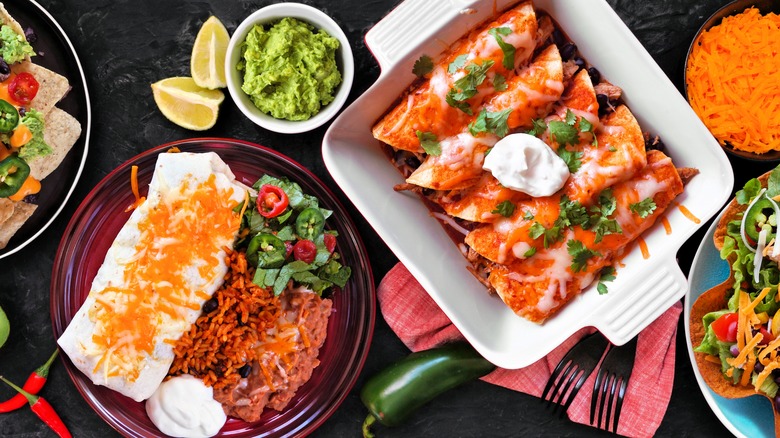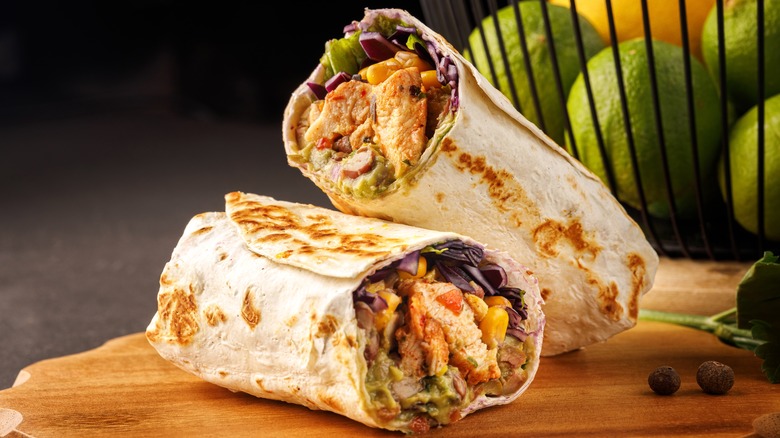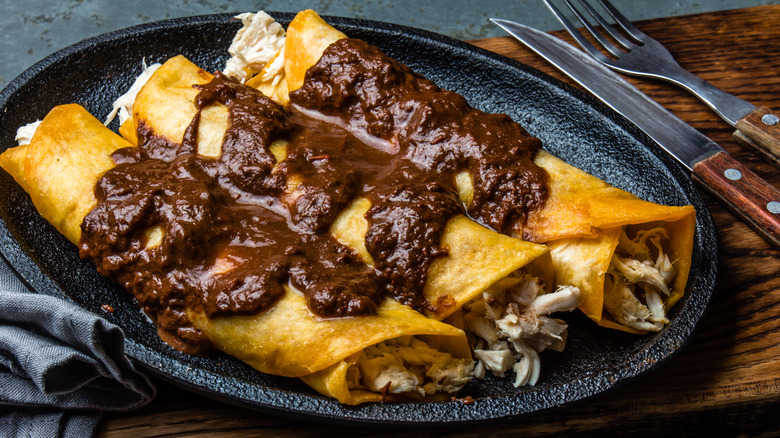The Difference Between Burritos And Enchiladas, Explained
Between sipping on frozen margaritas and stuffing yourself with more chips and salsa than should be humanly possible, sitting down with a few friends at a good Mexican restaurant is one of life's simple pleasures. There's usually only one small problem at these eateries: with so many delicious options on the menu, it can be almost impossible to decide what to order. To the untrained eye, a lot of Mexican food seems just like some combination of tortilla, rice, and beans, but there are aspects of each dish that make it unique. Take burritos and enchiladas, for example; the two are certainly similar, but they are dishes with differences worth recognizing.
Before we discuss what makes burritos and enchiladas different, it's worth pointing out a few of their similarities. Both dishes originate from Mexico, and are key fixtures of both Mexican and Tex-Mex cuisine. Burritos and enchiladas both typically feature some sort of chile sauce or seasoning, but aside from that, the dishes are quite distinct when you break down their basic components.
The beauty of burritos
A key difference between burritos and enchiladas is that burritos use large flour tortillas. These soft tortillas are used to wrap around a burrito's various fillings, forming a delicious cylindrical package. Unlike enchiladas, burrito fillings are usually cooked before they are put into the tortilla. Traditionally, burritos enjoyed in Mexico only have a couple of fillings, but burritos as we know them in the U.S. are usually filled to the brim with any combination of meat, cheese, guacamole, rice, beans, veggies, and more. Given their ability to hold vast amounts of food, burritos are very customizable, and there are many different varieties. For example, California burritos feature french fries as a main ingredient, while chimichangas are burritos that have been fried.
Because of their construction, burritos are much more portable than enchiladas. They are often wrapped in foil or butcher paper, and can usually be held and eaten with one hand. All of a burrito's ingredients are contained in a tortilla, which makes them a great street food and a perfect meal for on-the-go. Of course, that doesn't mean you can't also enjoy one while sitting down at your favorite local Mexican restaurant.
What makes enchiladas unique
While burritos usually end up being quite large, individual enchiladas are much smaller. This is due to the fact that they are made with small corn tortillas. Small tortillas also mean that enchiladas don't include many different fillings. These usually include chicken, cheese, or beef along with beans or rice, but sometimes enchiladas can just have a protein with nothing else. After each tortilla is wrapped around the fillings, they receive a hearty coating of sauce. This sauce is typically made from blended peppers or mole, but cheese, sour cream, and salsa-based sauces are other popular options. The enchiladas, fillings and all, are then cooked in the oven before being served warm.
Enchiladas are usually served three or four at a time, and since they are usually slathered in sauce, they're best eaten with a fork and knife. They are also open on either end and, since the ingredients aren't fully contained like they are in a burrito, can become quite messy. You can try eating enchiladas while walking around, but it might end in tragically dropped food. One common feature between burritos and enchiladas is that they're so tasty it would be a shame to see either go to waste.


